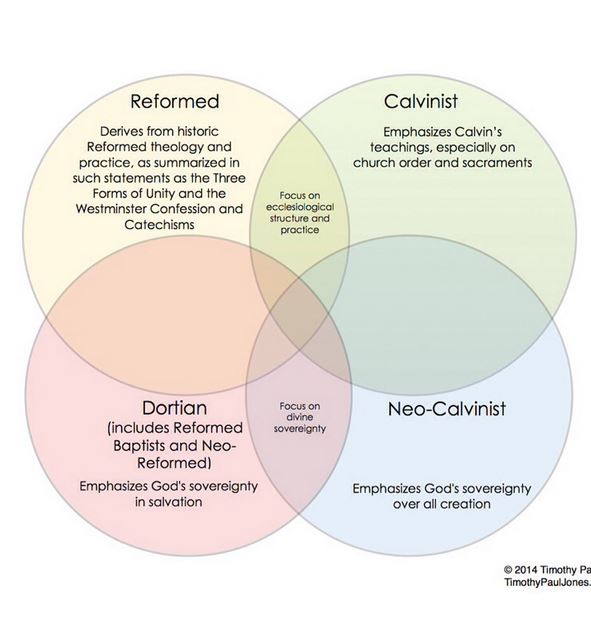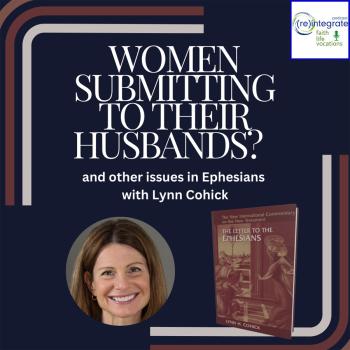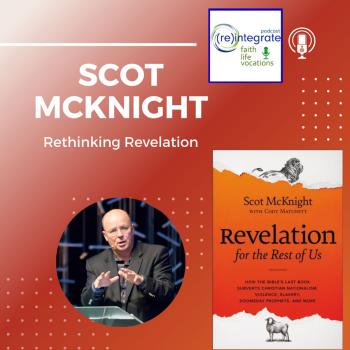So I wrote this post last month on why the “New Calvinism” (the young, restless, and Reformed group) should not be called “Neo-Calvinism” – that Neo-Calvinism sees the Gospel as the redemption of all creation while this new group sees the Gospel as the salvation of individuals.
See “So What’s Wrong with Neo-Calvinism?”
In “Naming the New Calvinism,” Timothy Paul Jones, Associate Professor of Leadership and Church Ministry at The Southern Baptist Theological Seminary, has written a post that helps this conversation move forward. He writes,
The relatively recent introduction of “neo-Calvinist” to describe the latest resurgence of interest in Reformation theology has muddied the semantic waters even more—but not because “neo-Calvinist” or “new Calvinist” carries too many different meanings (not yet, anyway). It’s because, at least since the early twentieth century, “neo-Calvinist” has described the views of Dutch Reformed theologians who emphasized the lordship of Christ over all creation and the capacity of grace to restore nature. It was neo-Calvinist Abraham Kuyper who famously declared, “There is not one square inch in the whole domain of human existence over which Christ, who is sovereign over all, does not declare, ‘Mine!’”
To identify the current Reformation-oriented crowd as “neo-Calvinist” is to confuse a venerable movement that focuses on God’s sovereignty over creation with a current movement that focuses on God’s sovereignty in salvation. The result is a blurred definition that does disservice to persons in each group, especially since some of us do theology in ways that derive in different ways from both movements.
And then he takes issue with my use of the title “Neo-Puriatan” to identify these new Calvinists.
“Neo-Puritan,” perhaps the most misguided of all the recent monikers, would multiply the muddiness even more. Reformed theology was never the primary factor in setting the limits of Puritanism. “Puritan” has historically included not only Christians who profess Reformed soteriology but also at least a few Arminians and—depending on who you ask—perhaps even Quakers.
What Timothy Paul Jones would rather us realize is that this new group of Calvinists are getting their cues from the Synod of Dort. The “Five Points of Calvinism” (Commonly known as “TULIP”) were codified in the canons of Dort, and when this happened, according to Jones, it disconnected the Reformed theology of salvation (i.e., soteriology) from the rest of the Covenant theology associated with the Calvinists. Thus, people could embrace Reformed teachings on soteriology without having to subscribe to the the Confessions and Catechisms of the Reformed traditions. Jones makes a great point when he says,
Of course, the Reformed pastors at the synod of Dort never intended their summary of Reformed soteriology to stand alone. The five points in the canons of Dort were designed to serve as a soteriological clarification, standing as one of the Three Forms of Unity alongside the Belgic Confession and Heidelberg Catechism. That’s why one scholar has declared, “It would be a major error–both historically and doctrinally–if the five points of Calvinism were understood as the sole or even the absolutely primary basis for identifying someone as holding Calvinistic or Reformed faith.”
 But you see, this is exactly what these new Calvinists are doing! They have defined the Gospel solely in terms of soteriology. To these folks, the Gospel is primarily about salvation. What Neo-Calvinists insist is this:
But you see, this is exactly what these new Calvinists are doing! They have defined the Gospel solely in terms of soteriology. To these folks, the Gospel is primarily about salvation. What Neo-Calvinists insist is this:
The Gospel is about God’s redemption of his entire Creation. The means by which this is done is through the salvation of people, but the ultimate goal is not to see individuals blissfully worshiping God in heaven. The telos is for God to be the Lord of all creation, with every knee bowed before Him as we live in a new heaven and new earth. It is, quite simply, the consummation of God’s kingdom.
Timothy Paul Jones also offers a working diagram trying to differentiate the different streams of Calvinism that I think is very helpful. Check it out here.
Feature Image by Bob Robinson












